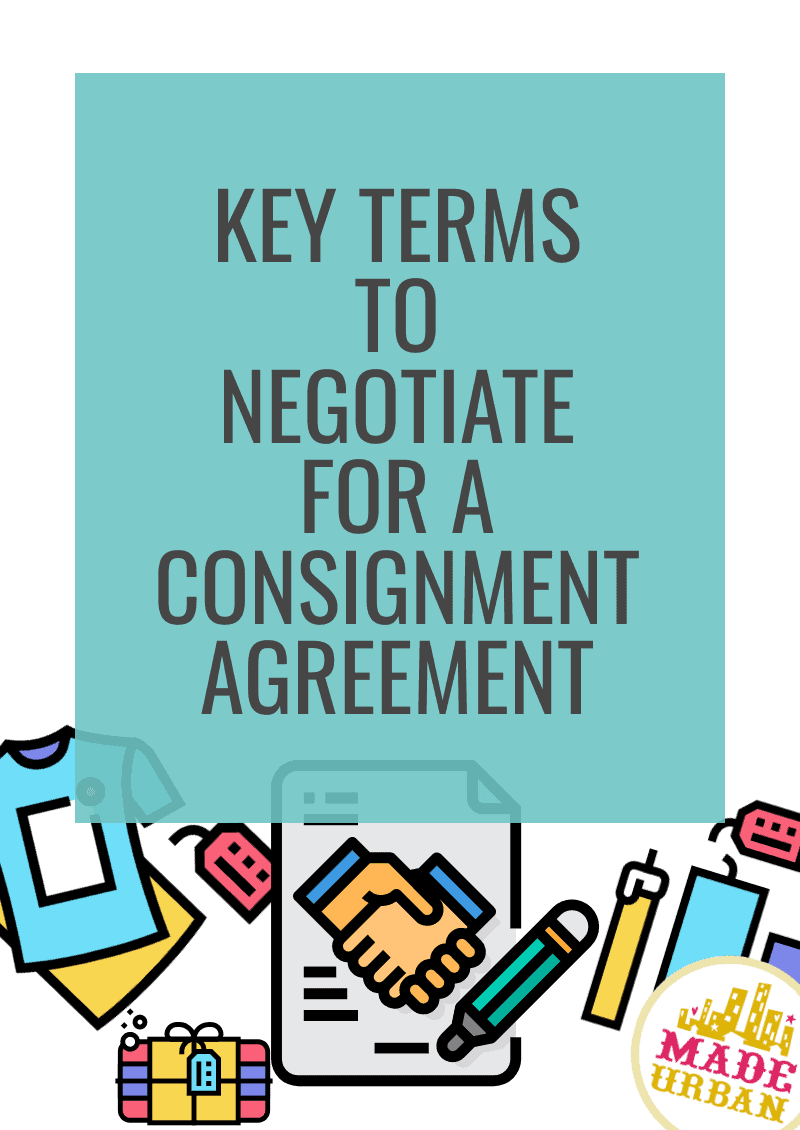Key Terms to Negotiate for a Consignment Agreement
When you decide to work with a storeowner on a consignment basis, you’ll need a consignment agreement to be sure you both agree to the terms of the deal and know what your obligations are.
The store should have a consignment agreement or contract for you to sign, but before you sign it, make sure it covers the terms in this article and that the terms make sense for your business.
1) Consignment percentage/split
When one of your items sells through the consignment store, you’ll receive a percentage of that sale as will the store owner. The consignment store likely has a split they follow (e.g. 60/40 split) however, you may negotiate a different percentage.
>> What’s a Fair Consignment Percentage? (How To Negotiate an Increase)
Check to be sure the percentage is what you’ve agreed upon before signing the contract.
2) Consignment period
A store doesn’t want to hang onto your stock for too long and neither do you. If an item isn’t selling in their store, you want to find another way to move that inventory so you’re not eventually left with out-of-season, out-of-trend, or shop-worn products. Each store is different and I’ve found that the smaller the store, the shorter the consignment period is because they constantly want to make room for fresh stock. If a store has less traffic, they may want your products for a longer period.
If your products haven’t sold by the end of that period, you’ll be required to pick them up or they’ll ship them back to you. At which point, you must sell those items so you don’t take a loss. Keep that in mind if you sell seasonal products or trendy products. You don’t want a consignment period to be too long, or you won’t be able to sell the stock once you get it back.
3) Shipping
Many of the consignment stores I worked with were in my city, and I would simply organize drop-offs and pick-ups when I was running errands. But I did work with a few out-of-town consignment shops that I had to ship my products too. Either way, it’s a cost that someone must cover.
The consignment agreement should outline who is responsible for the cost of getting the stock to and from the store.
4) Payment
Once your products sold, you need to be paid for them. The consignment terms should outline how many days after a sale you’ll be given a cheque, how frequently cheques are written, and how the cheques are distributed (e.g. are they mailed to you or must you pick them up).
5) Incidentals
Accidents happen and if one of your items is damaged, stolen, or lost while in the store’s possession, the agreement should outline how you’ll be compensated.
There will be other terms and information included in the consignment agreement the store has you sign. However, these are the basic terms you should think about before approaching stores and ones you may want to negotiate to ensure the agreement will be profitable for you.
You may also be interested in reading:
- What’s a Fair Consignment Percentage? (How To Negotiate an Increase)
- Consignment vs. Wholesale (Which is Better?)
- Consignment Inventory Tracking Spreadsheet


Hey, I’m Erin 🙂 I write about small business and craft show techniques I’ve learned from being a small business owner for almost 2 decades, selling at dozens of craft shows, and earning a diploma in Visual Communication Design. I hope you find my advice helpful!

Thank you for these hints on consignment tips. I have been asked to place my work in a shop and I am considering approaching others. I have also been requested to do workshops so there are quite a few points to consider for both. Joyce